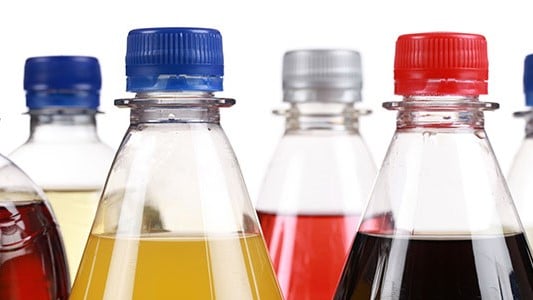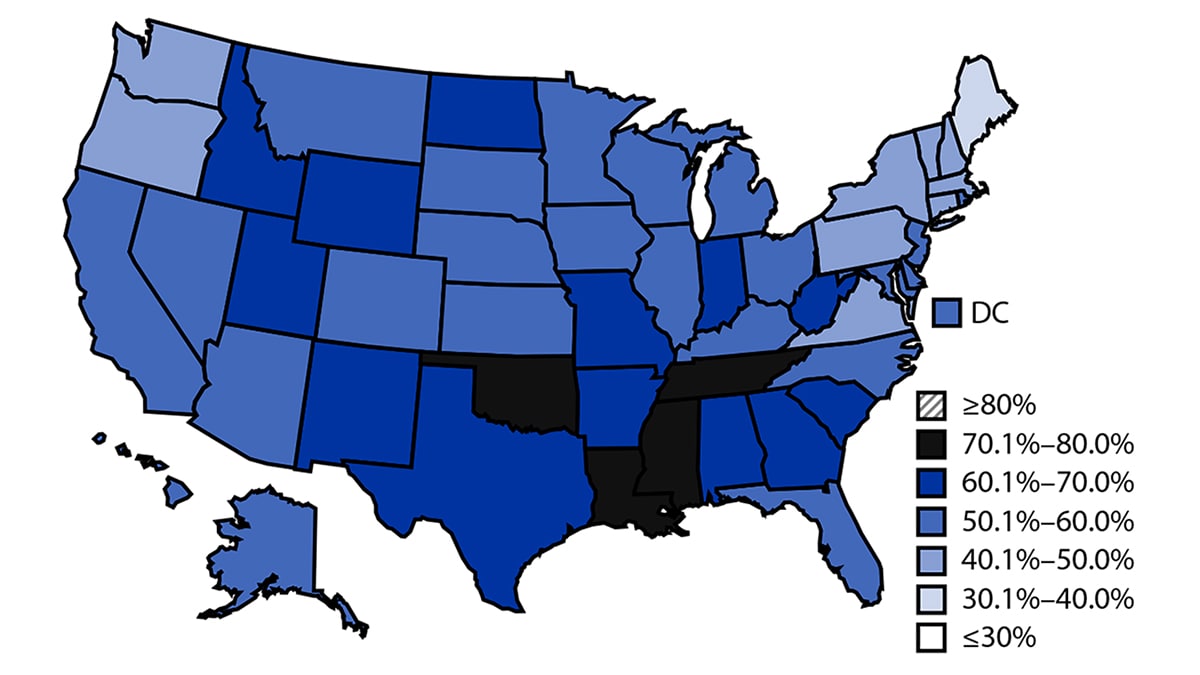What to know
Frequently drinking sugar-sweetened beverages (SSBs) is associated with negative health consequences. Data on SSB consumption suggests intake varies by several sociodemographic factors. Limiting sugary drinks can help individuals maintain a healthy weight and healthy diet.

Sugar-sweetened beverages and health
Sugar-sweetened beverages (SSBs) or sugary drinks are leading sources of added sugars in the American diet. Frequently drinking SSBs is associated with weight gain, obesity, type 2 diabetes, heart disease, non-alcoholic liver disease, tooth decay and cavities, and gout, a type of arthritis.123
What are sugar-sweetened beverages?
SSBs are any drinks that are sweetened with various forms of added sugars. Examples of added sugars include sweeteners, such as table sugar, sugars from syrups and honey, and sugars from concentrated fruit or vegetable juices.4
Examples of SSBs include, but are not limited to, regular soda, fruit drinks, sports drinks, energy drinks, sweetened waters, and coffee and tea beverages with added sugars.5
Replacing added sugars with low- and no-calorie sweeteners may reduce calorie intake in the short-term and aid in weight management. However, questions remain about their effectiveness as a long-term weight management strategy. Low- and no-calorie sweeteners are not recommended for children younger than age 2.5
SSB consumption varies
SSB consumption varies by age, sex, race and ethnicity, geography, and socioeconomic status.
Age
Adults
In 2011–2014, 5 in 10 adults (49%) drank a sugar-sweetened beverage on a given day. On average, U.S. adults consumed 145 calories from SSBs on a given day.6
Children
In 2011-2014, 6 in 10 youth (63%) drank a sugar-sweetened beverage on a given day. On average, U.S. youth consumed 413 calories from SSBs on a given day.7
Among U.S. children aged 1 to 5 years, 57.1% reported consuming at least one sugar-sweetened beverages in the past 7 days.8

Did you know?
Race, ethnicity, and socioeconomic status
Among adults, SSB intake is higher among males, young adults, non-Hispanic Black or Mexican American adults, or adults with low incomes.6910
Among youth, SSB intake is higher among boys, adolescents, non-Hispanic Black youth, or youth in families with low incomes.79
Geography
The prevalence of U.S. adults who drink sugary drinks at least once per day also differs geographically:
- By region:
- 68% in the Northeast.
- 67% in the South.
- 61% in the West.
- 59% in the Midwest.11
- 68% in the Northeast.
- By urban status:
- About 31% in nonmetropolitan counties.
- 25% in metropolitan counties.12
- About 31% in nonmetropolitan counties.
Americans drink 52% of SSB calories at home, and 48% of SSB calories away from home.13
Less healthy behaviors
SSB consumption is associated with less healthy behaviors. Adults and adolescents who smoke, don't get enough sleep, don't exercise much, eat fast food often, and do not eat fruit regularly are more likely to be frequent consumers of SSBs. Additionally, adolescents who often drink SSBs also have more screen time, including more time with televisions, cell phones, computers, and video games.10141516
Daily SSB intake by state
Data are from the National Health Interview Survey Cancer Control Supplement (NHIS CCS), 2010 and 2015.17 The map and data table below show combined 2010 and 2015 data.
Nationally, 63% of adults aged 18 or older reported drinking sugar-sweetened beverages one or more times daily. By state, SSB intake of 1 or more times daily ranged from 44.5% in Alaska to 76.4% in Hawaii.
Prevalence of self-reported intake of SSBs at least once daily among U.S. adults, 2010 and 201517
Resources
- A Data User's Guide to the BRFSS Sugar-Sweetened Beverage Questions: How to Analyze Consumption of Sugar-Sweetened Beverages
- Rethink Your Drink
- CDC Podcast: Sugary Drinks
CDC Publications (2014-2022)
Youth
- Dietary and physical activity behaviors among high school students, August 2020
- Daily adolescent sugar-sweetened beverage intake is associated with selected adolescent, not parent, attitudes about limiting sugary drink and junk food intake; January 2020
- Adolescent sugar-sweetened beverage intake is associated with parent intake, not knowledge of health risks; November 2018
- Trends in beverage consumption among high school students – United States, 2007–2015; February 2017
- District policies and practices vary in their association with adolescents' consumption of milk and 100% fruit juice; January 2017
- School district policies and adolescents' soda consumption; July 2016
- Child and caregiver attitudes about sports drinks and weekly sports drink intake among U.S. youth; January 2016
- Self-reported advertising exposure to sugar-sweetened beverages among US youth; May 2015
- Mothers' child-feeding practices are associated with children's sugar-sweetened beverage intake; April 2015
- The association of sugar-sweetened beverage intake during infancy with sugar-sweetened beverage intake at 6 years of age; September 2014
- A longitudinal analysis of sugar-sweetened beverage intake in infancy and obesity at 6 years; September 2014
Adults
- Factors related to water filter use for drinking tap water at home and its association with consuming plain water and sugar-sweetened beverages among U.S. adults; January 2022
- Reported changes in eating habits related to less healthy foods and beverages during the COVID-19 pandemic among US adults; January 2022
- Sugar-sweetened beverage intake among pregnant and non-pregnant women of reproductive age; April 2020
- Foods and beverages obtained worksites in the United States. June 2019
- Knowledge of health conditions associated with sugar-sweetened beverage intake is low among US Hispanic adults; January 2019
- Factors associated with frequency of sugar-sweetened beverage consumption among US adults with diabetes or prediabetes; September 2018
- Physician characteristics associated with sugar-sweetened beverage counseling practices; December 2018
- Impact of knowledge of health conditions on sugar-sweetened beverage intake varies among US adults; July 2018
- Total sugar-sweetened beverage intake among US adults was lower when measured using a 1-question versus 4-question screener; July 2018
- Permanent tooth loss and sugar-sweetened beverage intake in U.S. young adults; Spring 2017
- Association of sugar-sweetened beverage intake frequency and asthma among U.S. adults, 2013; October 2016
- Knowledge of sugar content of sports drinks is not associated with sports drink consumption; November-December 2015
- Association between sugar-sweetened beverage intake and proxies of acculturation among U.S. Hispanic and non-Hispanic White adults; 2016
- Sugar-sweetened beverage consumption among adults – 18 States, 2012; August 2014
- The relationship between health-related knowledge and sugar-sweetened beverage intake among US adults; July 2014
- Malik VS, Hu FB. Sugar-sweetened beverages and cardiometabolic health: An update of the evidence. Nutrients. 2019;11(8):1840.
- Malik VS, Hu FB. Fructose and cardiometabolic health: What the evidence from sugar-sweetened beverages tells us. J Am Coll Cardiol. 2015;66(14):1615–1624.
- Valenzuela MJ, Waterhouse B, Aggarwal VR, et. al. Effect of sugar-sweetened beverages on oral health: a systematic review and meta-analysis. Eur J Public Health. 2021;31(1):122–129.
- U.S. Food and Drug Administration. Added Sugars on the New Nutrition Facts Label. U.S. Food and Drug Administration; 2023.
- U.S. Department of Agriculture and U.S. Department of Health and Human Services. Dietary Guidelines for Americans, 2020-2025. 9th Edition. U.S. Department of Agriculture and U.S. Department of Health and Human Services; 2020.
- Rosinger A, Herrick K, Gahche J, et al. Sugar-sweetened beverage consumption among U.S. youth, 2011–2014. NCHS Data Brief. 2017;(271):1–8.
- Rosinger A, Herrick K, Gahche J, et al. Sugar-sweetened beverage consumption among U.S. youth, 2011–2014. NCHS Data Brief. 2017;(271):1–8.
- Hamner HC, Dooyema CA, Blanck HM, et al. Fruit, Vegetable, and Sugar-Sweetened Beverage Intake Among Young Children, by State — United States, 2021. MMWR Morb Mortal Wkly Rep 2023;72:165–170. DOI: http://dx.doi.org/10.15585/mmwr.mm7207a1
- Ogden CL, Kit BK, Carroll MD, et al. Consumption of sugar drinks in the United States, 2005-2008. NCHS Data Brief. 2011;(71):1–8.
- Lundeen EA, Park S, Pan L, Blanck HM. Daily intake of sugar-sweetened beverages among U.S. adults in 9 states, by state and sociodemographic and behavioral characteristics, 2016. Prev Chron Dis. 2018;15:E154.
- Park S, McGuire LC, Galuska DA. Regional differences in sugar-sweetened beverage intake among U.S. adults. J Acad Nutr Diet. 2015;115(12):1996–2002.
- Imoisili O, Park S, Lundeen EA, et al. Sugar-sweetened beverage intake among adults, by residence in metropolitan and nonmetropolitan counties in 12 states and the District of Columbia, 2017. Prev Chronic Dis. 2020;17:E07.
- Kit BK, Fakhouri TH, Park S, et al. Trends in sugar-sweetened beverage consumption among youth and adults in the United States: 1999-2010. Am J Clin Nutr. 2013;98(1):180–188.
- Park S, Blanck HM, Sherry B, et al. Factors associated with sugar-sweetened beverage intake among United States high school students. J Nutr. 2012;142(2):306–312.
- Park S, Sherry B, Foti K, et al. Self-reported academic grades and other correlates of sugar-sweetened soda intake among U.S. adolescents. J Acad Nutr Diet. 2012;112(1):125–131.
- Park S, Pan L, Sherry B, Blanck HM. Consumption of sugar-sweetened beverages among U.S. adults in 6 states: Behavioral Risk Factor Surveillance System, 2011. Prev Chronic Dis. 2014;11:E65.
- Chevinsky JR, Lee SH, Blanck HM, et al. Prevalence of Self-Reported Intake of Sugar-Sweetened Beverages Among U.S. Adults in 50 States and the District of Columbia, 2010 and 2015. Prev Chronic Dis. 2021;18:200434.
